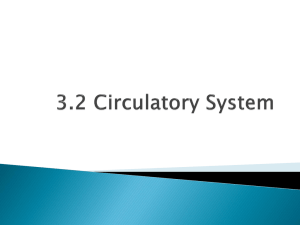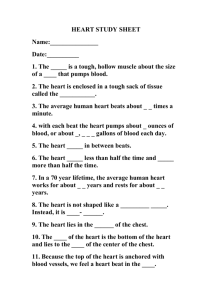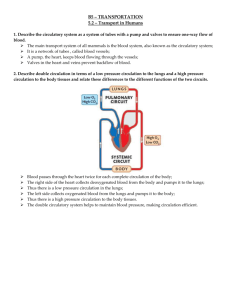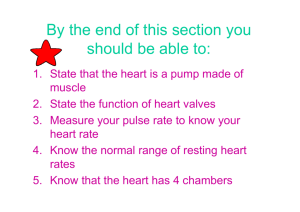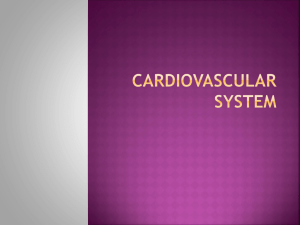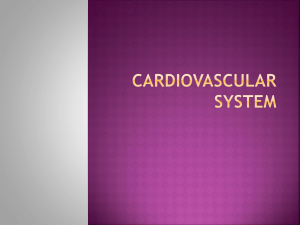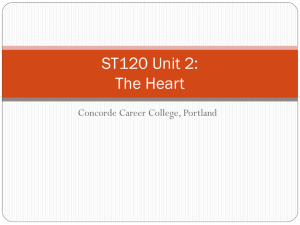Anatomy & Physiology
advertisement
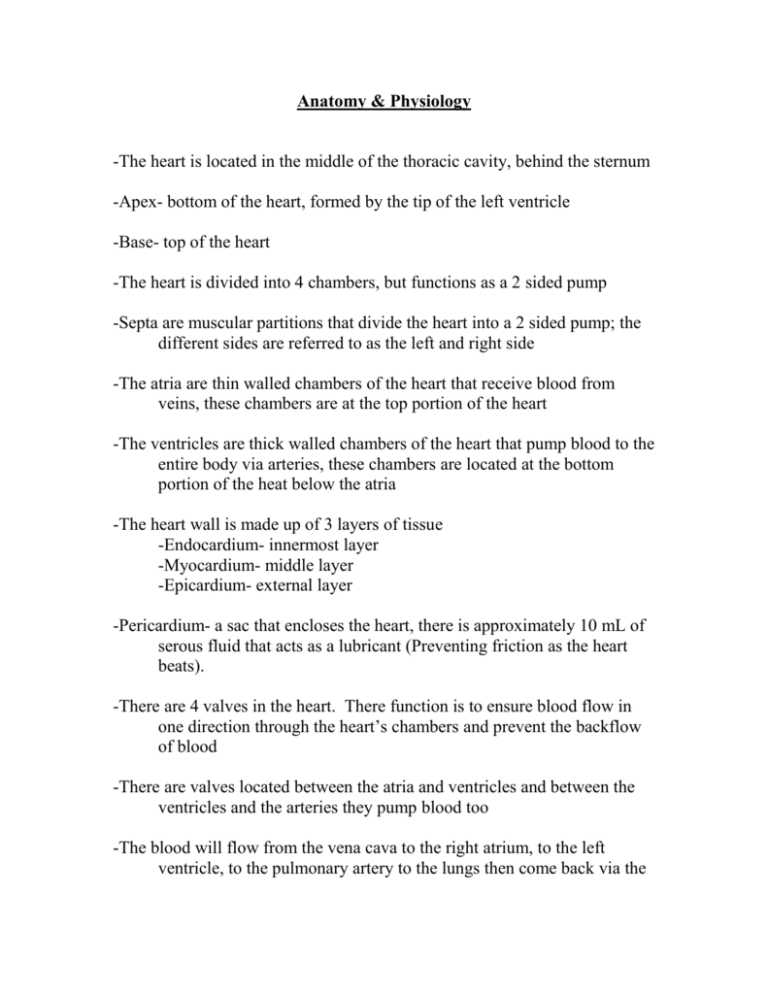
Anatomy & Physiology -The heart is located in the middle of the thoracic cavity, behind the sternum -Apex- bottom of the heart, formed by the tip of the left ventricle -Base- top of the heart -The heart is divided into 4 chambers, but functions as a 2 sided pump -Septa are muscular partitions that divide the heart into a 2 sided pump; the different sides are referred to as the left and right side -The atria are thin walled chambers of the heart that receive blood from veins, these chambers are at the top portion of the heart -The ventricles are thick walled chambers of the heart that pump blood to the entire body via arteries, these chambers are located at the bottom portion of the heat below the atria -The heart wall is made up of 3 layers of tissue -Endocardium- innermost layer -Myocardium- middle layer -Epicardium- external layer -Pericardium- a sac that encloses the heart, there is approximately 10 mL of serous fluid that acts as a lubricant (Preventing friction as the heart beats). -There are 4 valves in the heart. There function is to ensure blood flow in one direction through the heart’s chambers and prevent the backflow of blood -There are valves located between the atria and ventricles and between the ventricles and the arteries they pump blood too -The blood will flow from the vena cava to the right atrium, to the left ventricle, to the pulmonary artery to the lungs then come back via the pulmonary vein to the left atrium, to the left ventricle, then to the aorta. -The cardiac cycle is divided into 2 categories systole and diastole -Systole- the period at which the ventricles are contracting. The valves between the atria and ventricles are closed, and the valves between the ventricles and arteries “Aorta and pulmonary artery” are open. -Diastole- The period of relaxation, when the chambers are filling. The valves between the atria and ventricles are open, and the valves between the ventricles and arteries “Aorta and pulmonary artery” are closed. The heart is actively filling with blood during this period. -Coronary circulation consists of coronary arteries and veins Coronary arteries- blood is supplied to the tissue of the heart via these arteries during the diastole cardiac cycle. The coronary has 2 major branches the left and right coronary artery. The right coronary artery supplies the inferior and posterior portion of the heart. The left coronary artery divides into 2 branches; the anterior descending that supplies the anterior portion and septa wall and the circumflex that supplies the lateral and posterior portion of the heart. Coronary veins- blood that has been delivered to the heart then passes thru the coronary vein back to the right atria. -Heart rate is innervated by both the sympathetic and parasympathetic division of the autonomic nervous system. Baroreceptors- detect changes in blood pressure Chemoreceptors- detect changes in pH, oxygen, and carbon dioxide levels in the blood Parasympathetic stimulation- slows the rate of discharge from the SA node and slows conduction thru the AV node. The net effect is slowing of the heart rate. The primary chemical released is acetylcholine. Sympathetic stimulation- increases ventricular contraction, heart rate, blood pressure, and cardiac output. The primary chemical released is norepinephrine. -Venous return- amount of blood flowing into the right atrium each minute from the systemic circulation -Cardiac output- amount of blood pumped into the aorta each minute by the heart; cardiac output = stroke volume X heart rate -Frank-starling law -Blood pressure= cardiac output X peripheral resistance -Stroke volume -Preload- force exerted by the blood on the walls of the ventricles at the end of diastole -Afterload- pressure or resistance against which the ventricles must pump to eject blood



